Get rid of warts forever!
At OC MedDerm, we offer all treatment options for your skin lesions. Call us to make an appointment to diagnose and treat your warts.
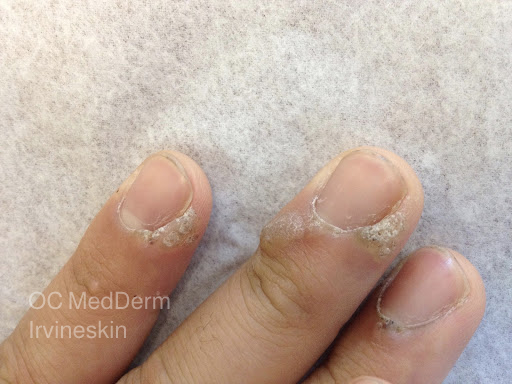

The photo above shows the result of one of our patients who suffered from warts on his fingers. Here is the before and after treatment of warts with cryotherapy.
What are warts!
Warts are skin growth caused by HPV, human papillomavirus. HPV infection is very common. There are over 150 types of HPV and only certain types of HPVs cause warts.
Facts you must know about warts!
- Warts are contagious
- The size and shape of warts may vary and can resemble other types of skin lesions
- Other skin diseases may look like warts, therefore, proper diagnosis before treatment is a must!
- Warts can be stubborn and can spread if untreated
- Smaller warts are easier to treat
- Treatment of deeper and larger warts are more challenging
- Warts around nails called “periungual warts” can be difficult to eradicate
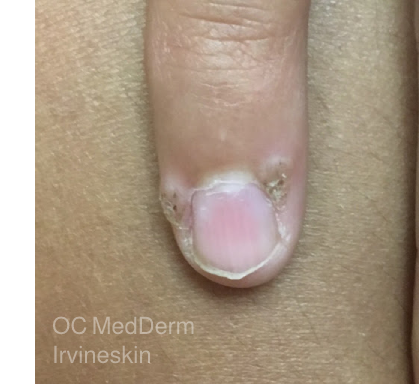
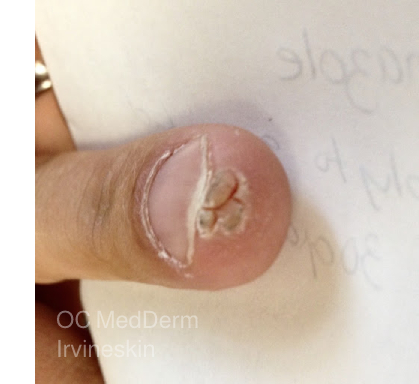
- Plantar warts on the sole of the feet can be difficult to treat and may need to be pared down or removed surgically
- Treatment of some warts may take several weeks or even months until the lesions are eradicated
- Click here to learn more about HPV.
Types of warts
Common warts: typically rough, cauliflower-like texture, round or oval in shape, usually skin-colored, often found on hands and knees (but can be located anywhere)
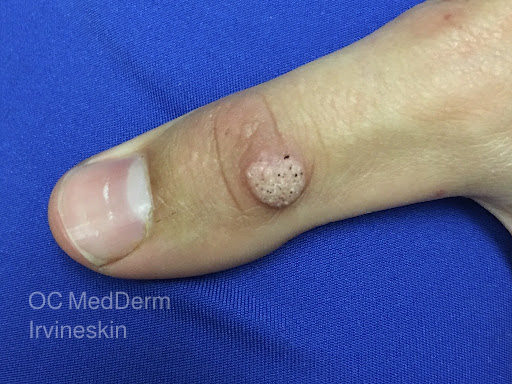
Plantar warts: rough or thicken skin found on the soles of the feet
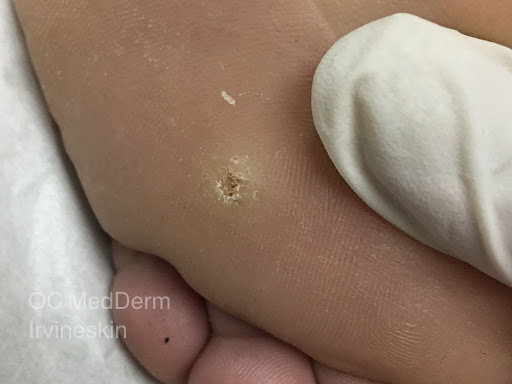
Flat warts: small skin-colored smooth bumps typically found on the face, top of the hands/feet, arms or legs.
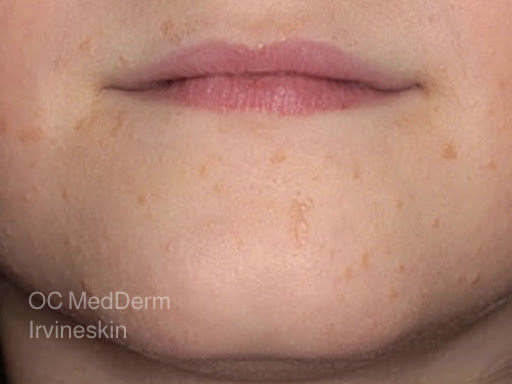
Genital warts: Skin-colored to hyperpigmented cauliflower-like or smooth surface bumps in the genital area. They are also known as condyloma acuminatum. Size can vary.
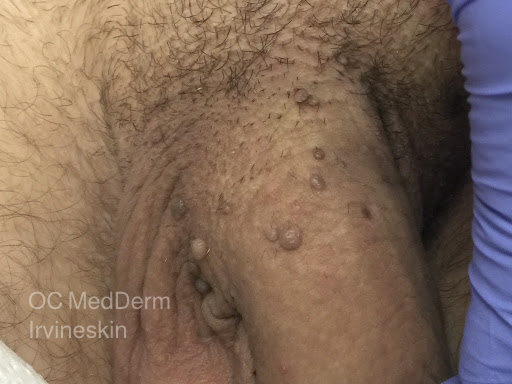
Can warts on my hands be transferred to genitals?
The subtypes of HPV causing gentle warts are usually different from the subtypes of HPV causing plantar, flat, or common warts.
Do genital warts increase the risk of cancer?
HPV types 6 and 11 cause approximately 90 percent of genital warts. Type 6 and 11 are not categorized as high-risk HPVs.
What are high-risk HPVs?
Fifteen HPV types were classified as high risk (HPV 16, 18, 31, 33, 35, 39, 45, 51, 52, 56, 58, 59, 68, 73, and 82). High-risk HPV subtypes are the cause of throat cancer, cervical cancer in females, and genital/anal cancer in males.
How can we prevent infection with high-risk HPVs?
Vaccination for certain strains of HPV, called Gardasil 9, is available and recommended for all individuals younger than 26 years of age. Most people older than 26 years have already contracted HPV infection, therefore the vaccine is encouraged for young individuals. Certain people working in high risk environments, such as those individuals in the medical field, may also benefit from vaccination at older age. Visit us to explore if you are a candidate for HPV vaccination which will increase your immunity against high-risk HPV infections.
Other skin diseases that can look like warts
There are many over the counter products for wart self treatment. We highly advise you to avoid self treatment before proper diagnosis of warts. You don’t want to delay the diagnosis and treatment of potential skin cancers which may look like warts. Even an experienced dermatologist may not be able to differentiate warts from skin cancer by just looking at it. In such cases, a quick and easy biopsy procedure can confirm the diagnosis and help us to offer appropriate treatment. The following are among other skin lesions that may look like warts.
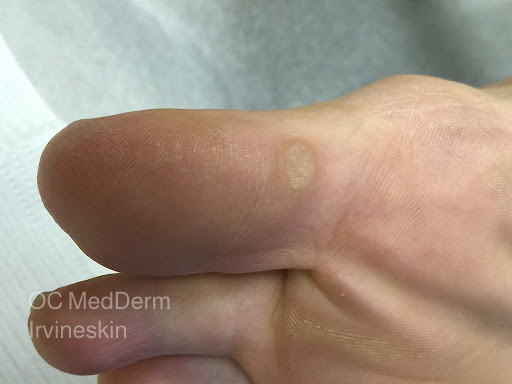
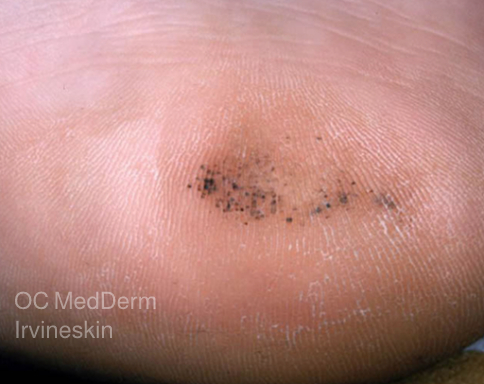
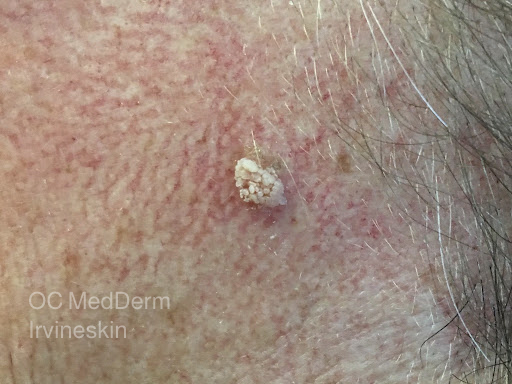
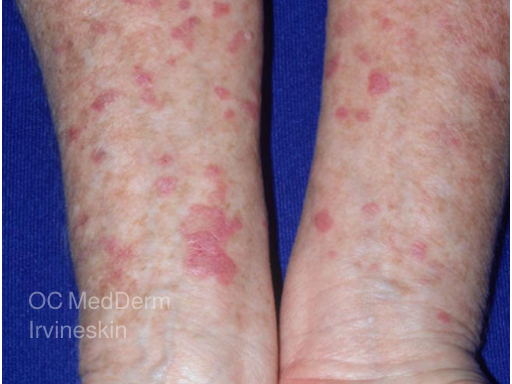
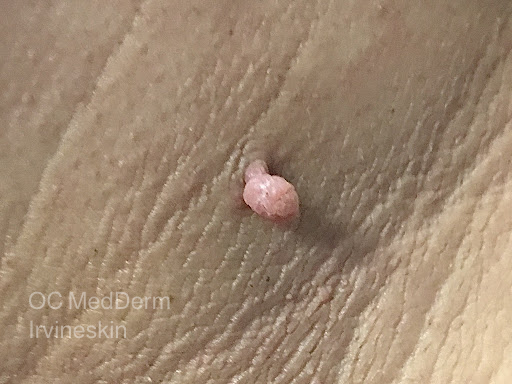
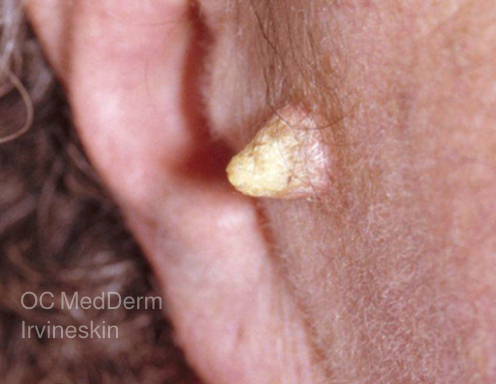
Who is at risk of warts?
Children and young adults are usually more prone to be infected with warts. People in certain professions (such as meat handling or wet work) may also be more likely to develop common warts. Warts may be more extensive and difficult to treat in patients with weakened immune systems or those with chronic diseases such as eczema or diabetes.
How do you get warts?
Warts are transmitted by skin-to-skin contact. HPV (the virus causing warts) penetrates injured skin and/or skin softened by water more easily. HPV can invade through healthy skin as well.
How long after exposure to HPV warts appear?
It can take up to six months or longer for warts to present.
What do warts look like?
Warts on the skin can have different appearances. A person may have a single wart or multiple warts. Size may also vary from tiny bumps to large cauliflower-like growths if untreated.
How are warts diagnosed?
Most of the time warts are diagnosed clinically by an experienced dermatologist, however, frequently other lesions may present similar to warts. Our dermatologists examine all suspicious lesions with a handheld magnifying device called a dermoscope to help guide diagnosis. If diagnosis is still in doubt despite close examination, suspicious lesions will be biopsied to confirm the diagnosis before treatment.
Treatments we offer to eradicate warts
Treatment of warts depends upon the location, size, number of lesions, previous treatments, type of warts, and other factors that should be considered. At OC MedDerm, our dermatologists will evaluate your skin lesions. After the diagnosis of warts are confirmed, a treatment plan will be tailored to your specific needs. If you fail the initial first-line recommended treatment, your dermatologist will provide you with alternative treatment options or implement combination therapy. We offer all kinds of treatments, including, but not limited to the following modalities:
Destruction of Warts via cold or heat
- Cryotherapy (liquid nitrogen) freezes the skin lesions
- Laser or other devices
Destruction of Warts physically
- Surgical removal of warts (paring or excision) Read more about surgical removal of warts
Destruction of Warts chemically
- Trichloroacetic acid(TCA)
- Salicylic acid(SA)
- Chantharadine
- Topical tretinoin)
Enhancement of local immune response which triggers a response from your body’s immune (infection-fighting) system
- Imiquimod(Aldara)
- Candida antigen
Antiproliferative therapy
- Fluorouracil – 5FU- (Efudex)
- Bleomycin
We will also provide you with detailed instructions on how to combine home therapy with your specific office regimen to expedite the resolution of your warts.
Contact us
If you have any new bumps on your skin suspicious for warts, lesions that are growing in size and number, painful or bleeding lesions, or lesions that bother you in appearance, then Call us to make an appointment for a medical visit or ask questions*. Visiting a dermatologist is the best source of information for questions and concerns related to your skin issues.
Other Treatments
Fungal Infection | What You Need to Know About Shingles | Scabies | Molluscum Contagiosum
Schedule a Consultation
